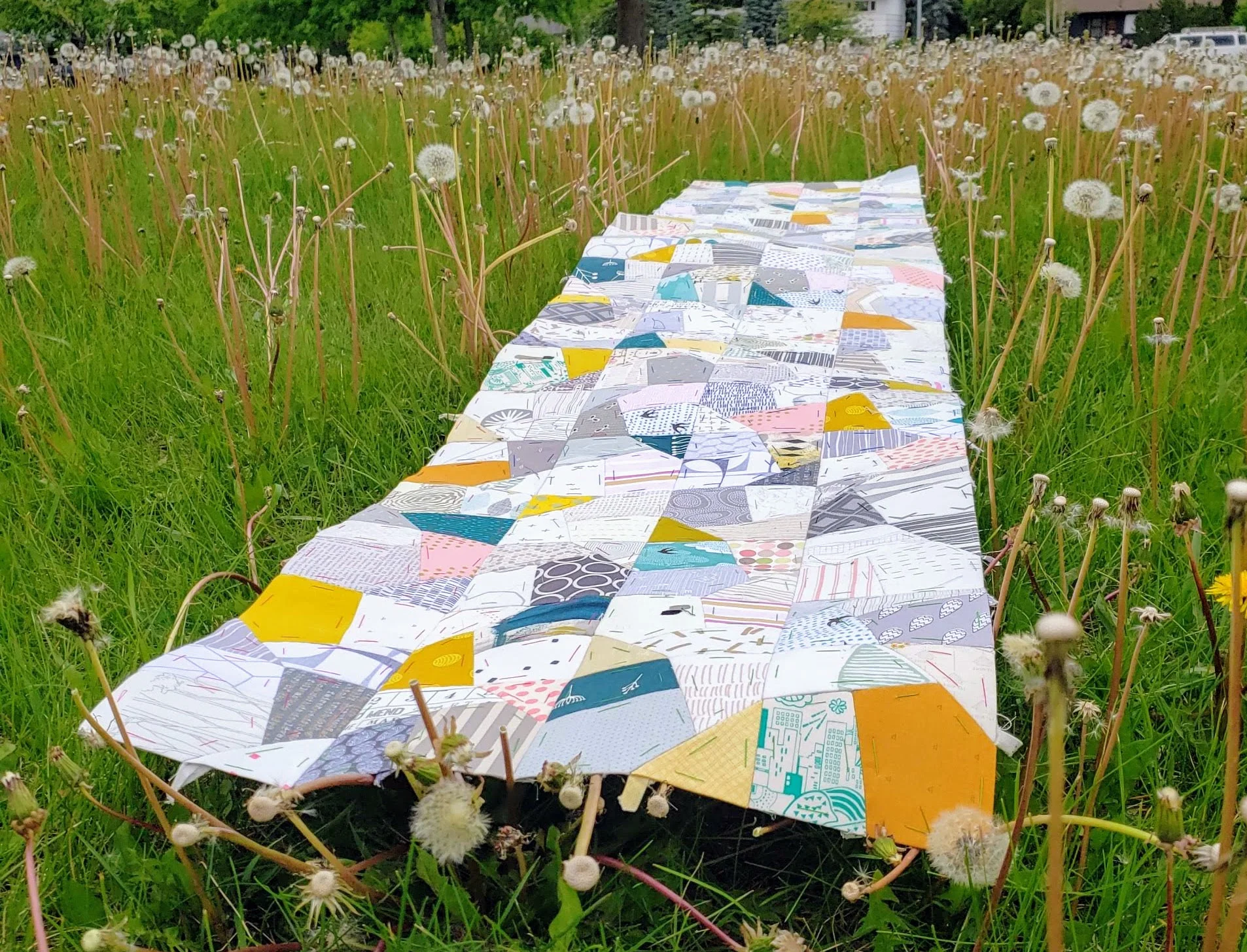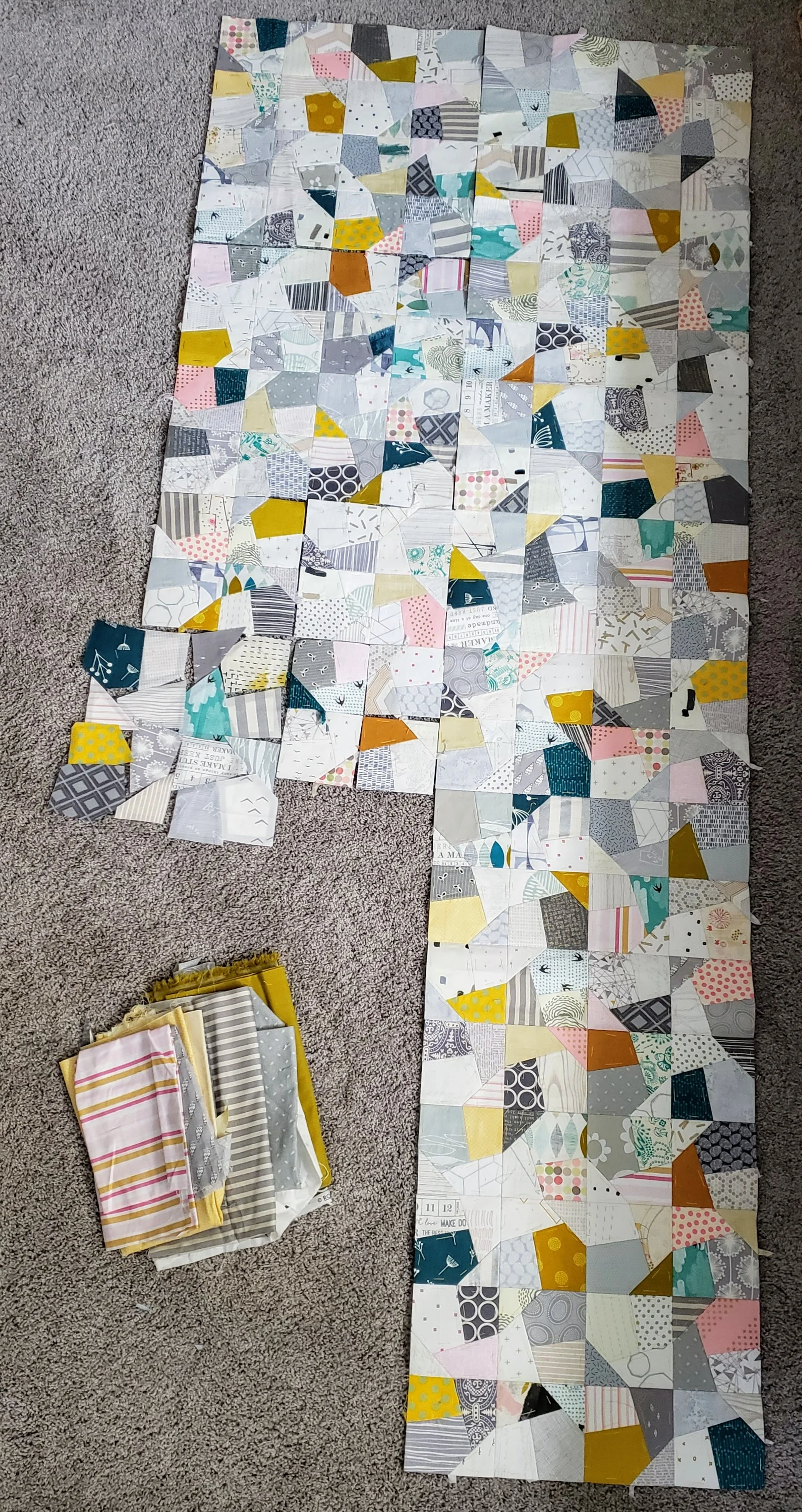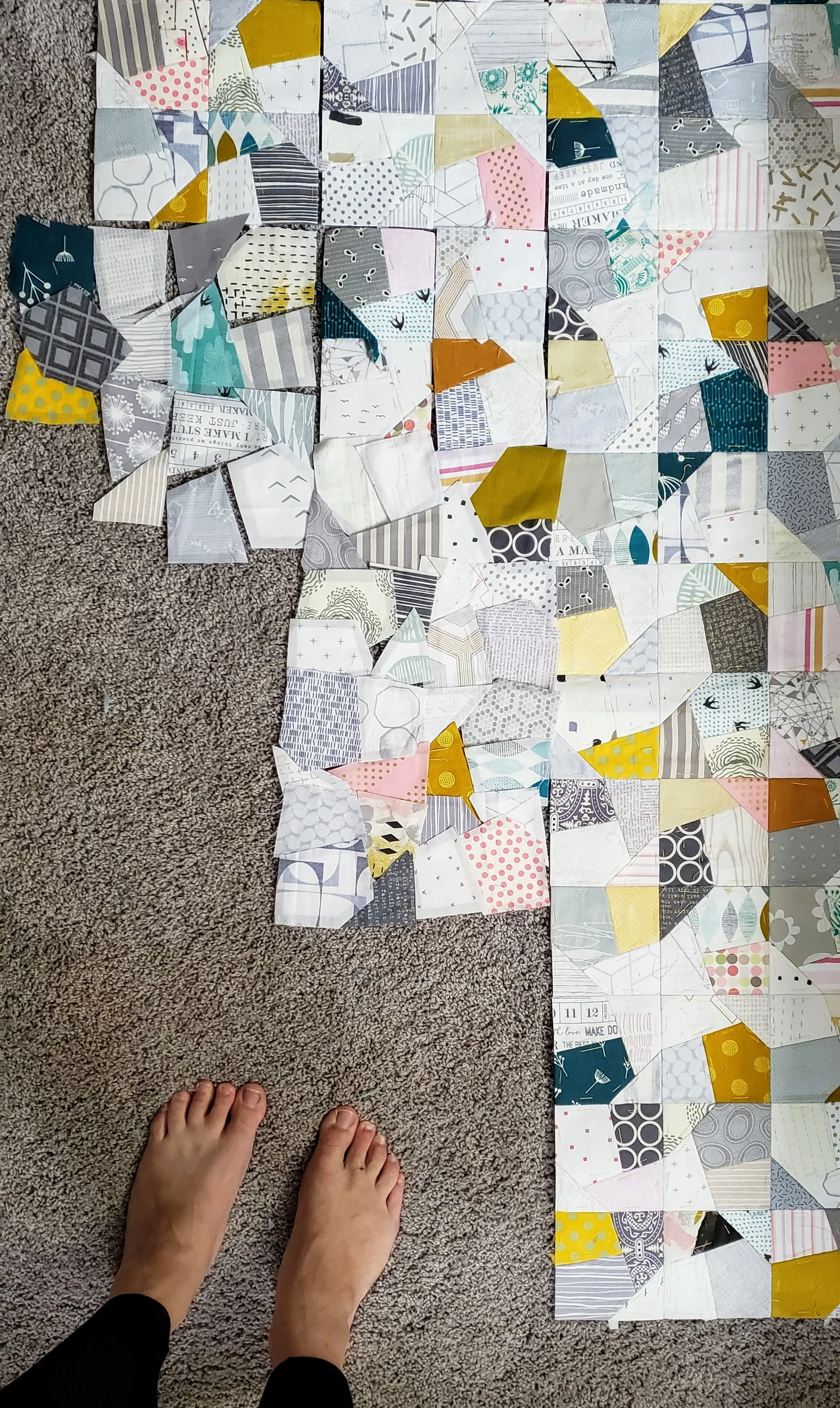Remember this one? I barely did. In the last year and a bit I think I’ve made 3 little blocks, just 3. I need 100 for the whole quilt, so that doesn’t exactly amount to much progress. Full transparency: I started this quilt in 2016. Frankly, I just wasn’t in the mood. I had other things to play with (shiny object syndrome).
Lately, however, I’ve been wanting to sit in the quiet. Maybe some music, maybe a show, but mostly just sitting still. The season for slow stitching returns. I pulled this out of the closet, hung up what I have finished, and got excited to stitch again. Sure, I’ve always been sewing, but the desire for this English Paper Piecing was gone. After those two hand work projects of 2023 I wanted more of that slow stitch time.
Turns out I only need 26 blocks to finish this. That means I am 3/4 of the way through. That isn’t that much, really. I’ve never timed how long it takes me from start to finish on one block, but I would venture that it is a few hours. That includes picking the fabric and prepping the pieces, basting, then stitching the block together. After that there is stitching block to block to block to block (I use 4 to make a larger, mega block). Then I have to assemble rows. Finally, add rows to each other. It’s all done by hand. I would guess I have at least 120 hours of stitching in front of me. Now, if I could sit down every day for hours a day, well, it wouldn’t take that long! But this, like most of my quilt making, is a side project to life.
Actually, this kind of slow stitching is life. No, I don’t mean that I am living for it. More that it is a big part of me and what makes me whole, calm, and living creatively. So yeah, it’s time to come back to this.










